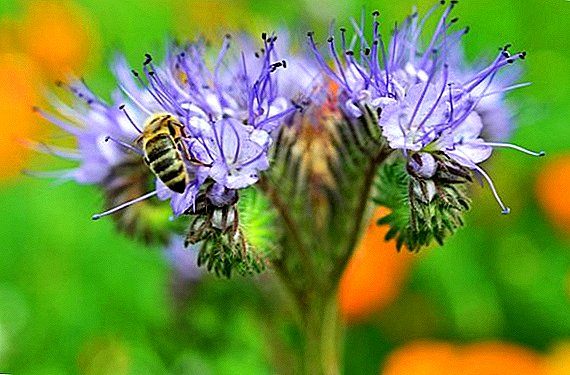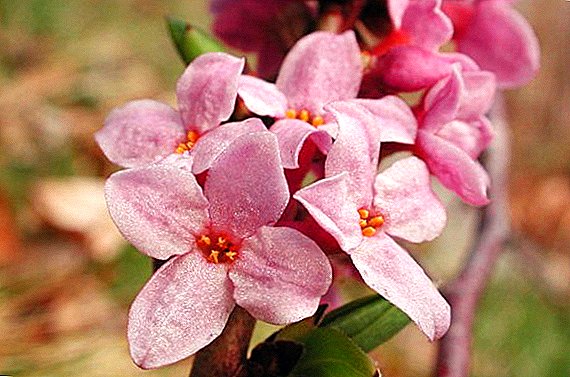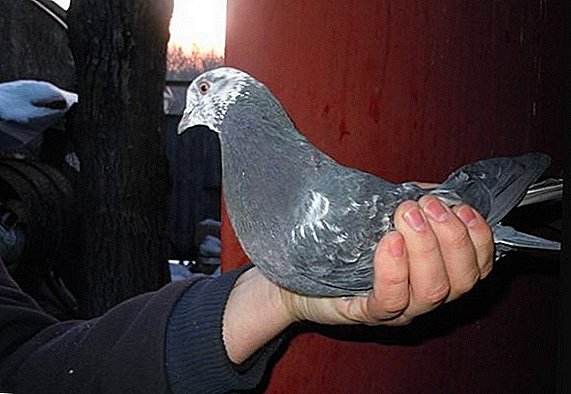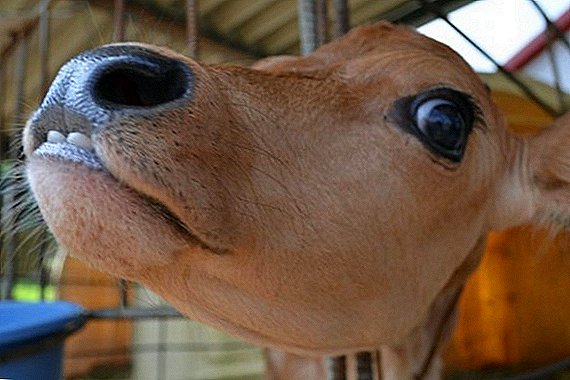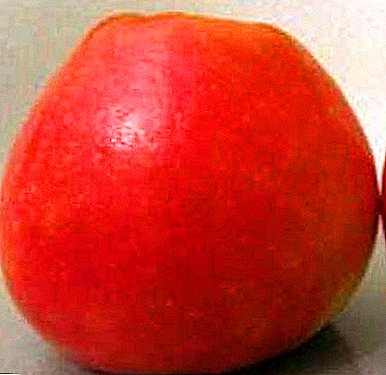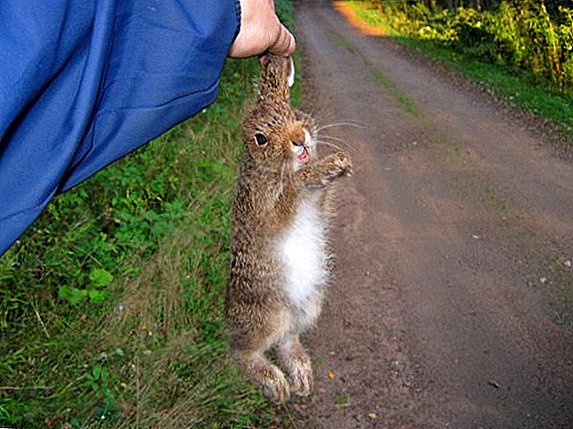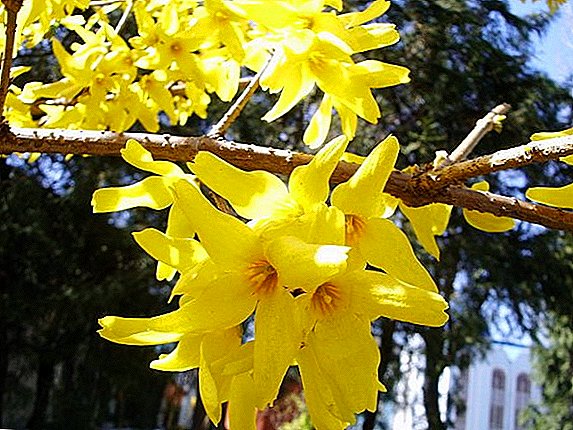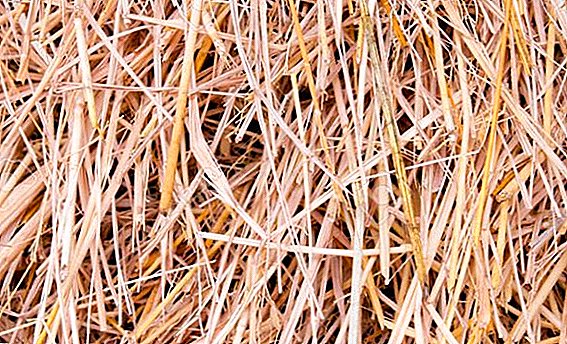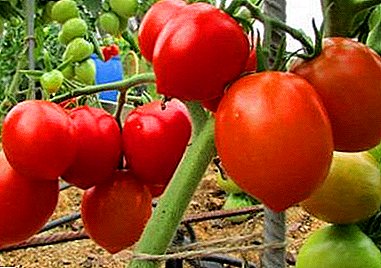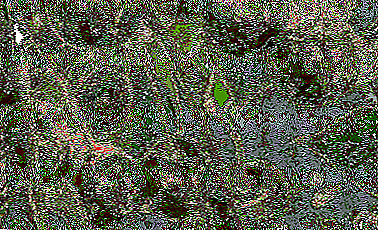
Cherry Stepnaya Ashinskaya considered a successful hybrid variety between shrub and garden cherries.
It has stable yield, up to 12 tons per hectare.
It is one of the best varieties to your taste and aroma.
Ashinskaya Cherry is considered one of the best - a description of the variety and photos later in the article.
Variety description Stepnaya Ashinskaya
 Features of steppe shrub cherry
Features of steppe shrub cherry
Steppe cherry comes from a kind of plum. It is a forest-steppe plant. Well take root in temperate continental climate.
In rural areas, it has been preserved along the edges of pine forests, meadows, beams, dry slopes and ravines.
Currently, there are various agricultural works on plowing, improvement, construction and breeding of large-horned livestock.
Therefore, steppe cherry has no opportunity to seize new territories.
Remarkably propagated by shoots. It is a low shrub reaching in height to one and a half meters. More often 0,6-1,1 meters. It has thin, slightly raised, shoots with small compressed and dense elliptical leaves.
Cherry shape diverse to taste sour with pronounced tartness. Often eaten by steppe inhabitants. Berries on a shade of various intensity - from bright red to dark burgundy. The bone inside the pulp at both ends is very sharp, small.
Cherry skoroplodnaya. In fruiting may enter the second or third year. Steppe cherry belongs to winter-hardy varieties. Endures fierce winter frosts from 47 to 55 degrees Celsius. It grows where ordinary cherry does not take root. It has a high drought tolerance. Tree can live from 20 to 25 years.
 A bush cherry can have several main trunks that extend from a short trunk or from the root system.
A bush cherry can have several main trunks that extend from a short trunk or from the root system.
Therefore, such a cherry is found in the form of overgrown dense thickets. The tree has bare shoots with small leaves.
In color, they are bright green, lanceolate in shape, brilliant. The flowers are white or beige, gathered in three or four false umbrellas.
Pedicle length does not exceed 25 millimeters. The flowering period is at the end of April.
Cherries do not require mandatory agrotechnical measures. The dying off of a tree can be accompanied by a drop in yields, cessation of gains, shrinking of the crown and skeletal branches.
With a small number of fruiting buds, the death of the tree occurs many times faster. It can be used as an ornamental plant. Today is very rare. Listed in the Red Book.
Differences of steppe shrub cherry from garden ordinary
- Steppe cherry has variegated and various forms of cherries. Berry garden cherry oval with rounded edges.
- Steppe cherry berries sour, with pronounced tartness. Garden cherry tastes softer. Fruit sweet, with a little sourness.
- Shrub cherry fruit has a color of varying intensity - from bright red to dark burgundy. Ordinary cherry has a smooth shade, mostly dark red.
 Shrub bone at both ends pointed, very small. At the garden - rounded with a cream shade, thickness 0.4 cm. The ribs of the bone are smoothed, they do not cause cuts in the oral cavity.
Shrub bone at both ends pointed, very small. At the garden - rounded with a cream shade, thickness 0.4 cm. The ribs of the bone are smoothed, they do not cause cuts in the oral cavity.- In fruiting steppe cherry comes on second or third year. At garden cherry fruiting occurs on 4 or 5 year after landing cutting.
- Steppe cherry refers to winter hardy varieties. Maintains severe winter frosts from 47 to 55 degrees Celsius. At the garden cherry frost resistance averageup to minus 48 degrees Celsius.
- Steppe cherry preserved on the forest edges, beams and ravines. Gardening is well acclimatized in personal plots, in orchards of amateur gardeners, industrial and collective gardens.
- Steppe cherry tree can live from 20 to 25 years. Garden cherry tree - up to 35 years.
- Bush cherry can have several main trunks which depart from the root system or a small trunk. Garden cherry has one main trunk.
- The flowering period of steppe cherry accounts for at the end of April. Flowering garden cherry occurs in the end of May.
- Steppe tree has small leaves. In garden cherry leaves are even 2-3 times smaller.
Breeding history and breeding region
 The variety has been entered into the state international register in early 2002. He is considered successful. a hybrid between steppe (bush) cherries and ordinary (garden).
The variety has been entered into the state international register in early 2002. He is considered successful. a hybrid between steppe (bush) cherries and ordinary (garden).
The originator of the variety is YUNIIPOK (South Ural Research Institute for Horticulture and Potato).
Authors-scientists: Anastasia Efimovna Pankratova, Kabir Kadirovich Mullayanov, Vladimir Ilyich Putiagin, IG Zamyatin
Synonym of the steppe tree: shrub.
Reproduction of the variety occurs in all existing ways: cuttings, shoots, pits and by grafting. It is well acclimatized in personal plots, in orchards of amateur gardeners, industrial and collective gardens. You can meet her in Asia Minor and Central Europe.
It is widely distributed throughout Russia and the CIS countries. The tree is common in Ural region, in the Caucasus, Kuban, in the Volga region, Nizhny Novgorod, Rostov, Voronezh, Yaroslavl regions.
Such varieties as Turgenevka, Kharitonovskaya, Fairy and Chernokorka grow well in these regions.
The Institute has 92 copyright patents, papers, certificates for inventions and scientific developments.
 Scientists are developing a hybridization scheme for drought resistance, frost resistance, fruiting and productivity.
Scientists are developing a hybridization scheme for drought resistance, frost resistance, fruiting and productivity.
Defects of flowers and spring buds to frost and increased immunity are eliminated.
The theoretical positions that serve to create elite, high-tech, successful cultures are revealed. Developments of the Institute are invaluable for amateur gardeners around the world.
Appearance
Consider separately the appearance of the fruit tree and the fruits themselves.
Tree
The production rating of Ashinskaya cherry is high. The variety has a slender beautiful tree, mainly in the absence of a compound of crowns. Tree has average height reaches 2.6-3.1 meters in height. Boom equals 20-45 centimeters.
Is a tree and fast growing. The crown of cherry is thick, cylindroconic in shape, elongated. It has a good foliage. Prone to large thickening foliage.
The escape is oval-rounded, without fluffs. The color is brown-gray with a silvery shade. In length can reach 30-45 centimeters. Medium lentils with a very small amount. Kidney bent, very long, medium in size. Palpation of the kidney has a smooth flat surface.
The foliage is abundant dark greenish tint. The shape is round, narrow, oblong, with a slight bend upwards.
 It has a short pointed shape and a sharp base with a biconcave edge of the leaf. In length, the sheet reaches 8 centimeters wide - 4 centimeters.
It has a short pointed shape and a sharp base with a biconcave edge of the leaf. In length, the sheet reaches 8 centimeters wide - 4 centimeters.
Downiness is absent. It has a shiny, smooth leaf plate, on the basis of which anthocyanin is present. Glands amber-yellow, ovate-rounded, small. The leaf has a short scape, reaching an average of 1.8 centimeters. Stipules in this variety are absent.
Fruit
Ashinskaya fruits cherry juicy, large. Oval in shape with rounded edges. The ventral side of the berries is slightly inclined towards the top. Along the cherry there is a small groove. The line of the scar berries is very weak. The top of the berry is oval with a narrow elongated funnel. Fruit in weight reach 4.1-4.9 grams.
Possess a maroon shade. Pulp burgundy with bright juice. The skin is radiant, dense, but easily eaten. The density is soft. The fruit stem is elongated, reaching 4 centimeters.
The shape of a straight, kosospostavlennaya, thin. The separation of the berries from the base of the stem dry - without damage and cracking. The appearance of the berries was estimated at 4.7 points out of 5 possible.
To taste sweet cherry, with a slight sourness. Pleasant the taste of cherries was rated at 4.5 points out of 5. Is an one of the best varieties to taste and pleasant delicate aroma.
Great taste is also demonstrated by Black Large, Minx, Chocolate Girl and Shubinka.
Variety Gardeners called dessert. But he refers to universal.
It is widely used in the manufacture of mousses, preserves, concentrated juices, compotes. Broth berries used in gastralgia and fever. Thanks to a small amount cobalt, nickel, copper and iron, improves state of health and blood formation.
| Composition | amount |
|---|---|
| Sugar | 11,7-12% |
| Dry matter | 16,3-17% |
| Free acid | 1,8-2% |
| Vitamin C | 10,3- 10,8% |
Favorably affects the body with anemia. Excellent effect on the gastrointestinal tract. Removes nitrogenous slags from the human body. Contains pectic substances. Fruit pulp contains some bactericidal substances.
 The stone of the berries is rounded with a cream shade, 0.4 cm thick. The length reaches 0.6 centimeters, width 0.5 centimeters.
The stone of the berries is rounded with a cream shade, 0.4 cm thick. The length reaches 0.6 centimeters, width 0.5 centimeters.
Perfectly separated from the pulp. The ribs of the bone are smoothed, they do not cause cuts in the oral cavity.
The dorsal seam is of fine smoothness, the abdominal is medium-smooth. The mass of the stone varies from 0.17 to 0.20 grams. From the mass of cherries is 8-10%.
A photo



Specifications
Variety belongs to self-propelled plant species. Can partially pollinate independently. The flowering period of cherry tree is medium, stretched in time. Bloom May 20-31. The pedicle is very short. The flowers are miniature, with a pleasant delicate aroma, 5 or 6 pieces in one inflorescence.
Petals are spacious, oval in shape, wide with a forked upper part. To the touch smooth, without shirring. Calyx extended to the top, bell-shaped, has a small serration. The type of corolla is ovate-saucer. Stamens are located above the stigma of the pistil.
The number of stamens reaches 26 pieces. Ovary without fluffs and velvet overcasting. The form of flowering and yield mixed.
Yield stable, annual, very high. The fruits of late ripening. Full maturity is reached in early August. Fruits with simultaneous ripening. Berry with heavy rainfall is subject to cracking.
The following varieties also have good yields: Volochaevka, Vianok, Generous and Griot Moscow.
 Fruiting occurs for 4 or 5 year after planting the cutting. Single tree successfully fruiting up to 35 years.
Fruiting occurs for 4 or 5 year after planting the cutting. Single tree successfully fruiting up to 35 years.
Productivity varies from 8 to 10 kilograms from one tree. From one hectare of orchard harvested from 10 to 12 tons of harvest.
Cherry tree tolerates drought. Frost resistance is average, to minus 48 degrees Celsius.
Resistance to severe frosts fruitful kidney in winter time - average. The resistance of inflorescences and buds to strong frosts in the spring time is slightly above average.
The freezing of the root system reaches a three-point mark.
A distinctive feature of the variety is the rapid restoration of the root system after freezing from the fierce winter frosts.
Planting and care
Variety propagation occurs in all existing ways.: cuttings, shoots, stones and by grafting. The easiest way is reproduction by saplings. Since early June, gardeners prepare shoots. Choose a reddish tint, hardened at the base.
The length of the cut shoots should exceed thirty centimeters. The pruning itself is done in the evening or in the early morning. It is best to choose cool weather. Cut off the stalks immediately placed in water. For the emergence of the root system use chemical growth regulators.
 Good fit heteroauxin. 100 ml solution diluted cold water and ethyl alcohol. Cuttings tied up and dipped in the mixture in volume 1 liter for eighteen hours.
Good fit heteroauxin. 100 ml solution diluted cold water and ethyl alcohol. Cuttings tied up and dipped in the mixture in volume 1 liter for eighteen hours.
Immersion of the shoot itself should not exceed 1.5 centimeters. To circumvent this procedure, you can buy ready-made seedlings in the markets or bazaars.
The soil for planting is prepared in advance. It follows dig, remove weeds and make in the form of beds. The notches fill peat and sand a layer of 10 cm. Top poured coarse river sand. All layers are aligned with the tools and tightly tamped.
Then you need plenty of water over the soil and feed superphosphate - mineral fertilizer.
The cuttings are planted vertically. The distance between the seedlings should be not less than 7 centimeters. Depth of landing - no more than 3 centimeters. Future trees are covered with plastic wrap, which provides care and protection from abundant sunlight.
For young seedlings should be careful irrigation of the sprayer. 14 days after planting, adventitious roots should appear in the seedling. After 30 days - hardly rooted.
Diseases and pests
 It has a high resistance to various diseases. Sort stable to coccomycosis. Other fungal diseases, no specific lesions were observed.
It has a high resistance to various diseases. Sort stable to coccomycosis. Other fungal diseases, no specific lesions were observed.
According to test data from the Moscow Society of Testing Nature (MOIP), variety Ashinskaya cherry was the most well resistant to pests and diseases.
The Dessert Morozova, Zhukovskaya, Igrushka and Lebedyanskaya are also resistant to certain diseases.
No injuries by insects and various diseases have been identified.
Conclusion. Ashinskaya Cherry steppe has excellent taste, juicy berries of bright color. It is widely used in industry for the preparation of concentrated juices, jams, mousses. It has a stable crop and simultaneous ripening of cherries. Favorite gardeners for unpretentious cultivation.
Reproduction occurs in all existing ways. It has a high resistance to drought and various diseases. The variety is not susceptible to coccomycosis. Can bear fruit 4 or 5 years after landing cutting. It has a long preservation of wood - up to 35 years. It is widely distributed throughout Russia and the CIS countries.
Watch the video about shrub (steppe) varieties of cherries


 Shrub bone at both ends pointed, very small. At the garden - rounded with a cream shade, thickness 0.4 cm. The ribs of the bone are smoothed, they do not cause cuts in the oral cavity.
Shrub bone at both ends pointed, very small. At the garden - rounded with a cream shade, thickness 0.4 cm. The ribs of the bone are smoothed, they do not cause cuts in the oral cavity.